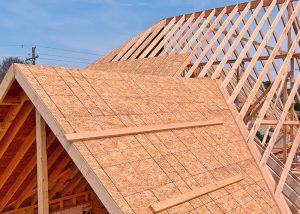ACV vs. RCV Insurance: Which is Best For a Texas Roof?
By Shantell Moya · 9 months ago · 11 min read

You live in Texas and you already know that wild weather can damage your home. I’ve seen it up close. Hailstorms and high winds can hit your roof hard and cause problems you might not see coming!
When you need to choose between these two coverage selections, it’ll have a big effect on your wallet. You should look at facts like how much each one costs, how old your roof is and the local weather hazards you might run into. This helps you avoid extra costs down the road. Don’t let the wrong choice turn into a mountain of repair bills later.
You’ll thank yourself for being careful and doing your homework. Let’s get started!
ACV Coverage And Example
With these protections on your Texas roof, you’ll need to get started looking over your insurance policy terms because what looks acceptable on paper might not work the way you actually expect. Cash Value coverage works differently than homeowners assume and you can think of it like selling a used car, where your car loses value because of wear and tear and your roof does the same. Your insurance company looks at how old your roof is before paying your claim and that basic fact can matter when you need repairs.
Here’s a real situation you might run into: You have a roof that’s 10 years old and a recent storm left you with $15,000 in repair costs. Since most roofs last about 20 years, your roof is now halfway through its expected life, so your insurance company would probably only pay half of the needed repairs. This means you might face a significant out-of-pocket expense.
That means you would get $7,500 for your claim if you have an ACV (cash value) policy and you would have to cover the rest of the costs yourself. Once you factor in a common deductible of $1,000, you might only see a final check of about $6,500. Texas homeowners often pick ACV coverage because the monthly cost seems affordable and the lower premium payments can cut back on your budget stress.
But that relief may fade when you actually have to depend on your insurance during a crisis. I learned this lesson firsthand after moving to Texas, when my neighbor, who had ACV coverage, ended up with a massive bill after hail severely damaged her roof. She believed she was completely covered. But when the claim came in, the insurance check barely paid even half of what her new roof cost.
You might choose ACV coverage if you need to watch every single dollar because lower monthly costs help you manage your regular budget better. Some people use it when they already have enough savings for household emergencies and insurance businesses sometimes lean toward ACV policies for homeowners with older roofs because they know these roofs will probably soon need work. By calculating depreciation, insurers don’t have to cover the cost of a full replacement.
It matters for you to know that the math behind ACV can seem a bit tough since your insurance adjuster will check your roof’s age, its current condition and the local replacement cost to determine how much value your roof has lost. Texas weather can be tough on your roof, as hail storms and the intense sun all take their toll. Your roof might need replacing sooner than you expect and with every passing year, the amount of depreciation covered by your ACV policy gets bigger.
RCV Coverage And Example
Replacement Cost Value insurance pays for a brand-new roof when your old one gets damaged. You just need to cover the deductible while the insurance takes care of the rest for you.
You can get started when the insurance company first sends you a check based on what your old roof was worth. This first payment helps kick off the repairs or replacement process and reduce the financial burden. Once you finish the work and show them your receipts, they’ll release the remaining funds to cover the job.
Here’s a situation to remember. If your roof replacement costs $15,000 and you have a $1,000 deductible, the insurance company might send you $10,000 upfront. This helps you get moving. Then after you wrap up the repairs and share the necessary paperwork, they issue the final $4,000 to you. This process makes everything much easier to manage.
This type of coverage brings you security during stressful times. When you don’t have to scramble to find extra cash to fix your roof, you can live your life without the added worry in the back of your mind. Texas homeowners choose RCV coverage because it gives them a sense of relief, especially when harsh weather hits.
You should know that RCV coverage comes with higher monthly payments compared to most other options available. However homeowners often find that this added cost is worth it. Think back to the last tough storm in Texas. Those with RCV coverage didn’t have to drain their savings just to replace their damaged roofs.
Texas weather tends to put your roof to the test time and time again. If you experience hail, high winds or intense heat, your roof can take a real beating. With replacement costs sometimes climbing to $25,000 or more, you only pay your deductible if you have RCV coverage. This applies no matter how old your roof is. This type of coverage guarantees that you get a full payout even if your roof is older. You can get a new roof that matches the material and quality of your old one, which keeps your home protected and eases the load on your wallet.
Premium Costs And Out-Of-Pocket
When you need to insure your roof in Texas, you should know about the cost differences between ACV and RCV policies. They can affect how you manage claims. ACV policies might cost you less each month, which sounds interesting! But those monthly savings can sometimes come back to hurt you later down the road. Imagine that your roof cost $60,000 to install about ten years ago. With an ACV policy, the depreciation is subtracted before you get the payment, so you might end up with only about $35,000 after the deductibles.
RCV policies work differently and help you better with your costs when you need it. These policies pay the full cost to replace your roof with a similar roof, so you only have to cover the deductible. RCV policies do come with higher monthly premiums. But they protect you more when unexpected damage happens.
Texas weather can be harsh and unpredictable for roofs and a sudden storm can hit you with a big repair bill! Texas homeowners often learn this lesson after they file their first claim. You could save around $30 each month with an ACV policy. But those savings might turn into a $25,000 out-of-pocket expense if your roof is damaged.
A brand-new roof might get by without the added help of an RCV policy. However as the roof ages, the risk of facing big repair bills with an ACV policy increases.
Weather Risks In Texas
Texas weather hits your roof hard because the extreme storms always seem to put it to the test! Hail and strong winds (and even tornadoes) come at you with little mercy and the numbers show just how often these destructive events happen. Hail storms remind you of their power when you see that Texas recorded an astounding 141 days of large hail in 2023. That record-setting year saw over 2 million Texas homes take a beating from hail.
That teaches you that these storms are a nonstop threat. You can also learn that the average yearly cost of hail damage to properties is about $338 million. You should also remember that Texas experiences more than 120 somewhat frightening hailstorms every year. That means your roof is likely to sustain damaging hits a few times annually, so taking extra steps is a good idea. When you hear about recent storms dropping hailstones bigger than softballs, you start to know the severity of the situation.
Storms like the Mayfest event in Dallas-Fort Worth in 1995 left behind an unbelievable $2 billion in damage. Wind damage can give you another reason to stay on guard. A week of extreme storms in May 2023 resulted in damages estimated to be between $7 billion and $10 billion. That proves that wind can strike any residential area without warning. It shows why your roof needs to be ready to resist gusts at almost any second.
The 2021 Hondo hailstorm taught homeowners a tough lesson. It became clear that their insurance coverage wasn’t enough to manage this type of stressful damage. You also see that construction costs add to your problems. As roof repairs and replacements become more expensive every year, you start to see how it can add up.
Some Texas homeowners have been forced to replace their roofs multiple times over just a few years. If you live on the Gulf Coast, you might have extra challenges. Massive hurricanes blast your home with intense winds and heavy rains that can rip off shingles. This leaves your house exposed to serious water damage. It makes it clear that you need to be especially vigilant during hurricane season.
Heat and humidity work against you in roof maintenance as well. The relentless Texas sun makes roofing materials expand and contract, which can cause cracks and weak spots over time. High humidity can add another layer of challenges as it traps moisture under your shingles, creating perfect conditions for long-term damage.
Policy Rules For Older Roofs
Your roof insurance can change quite a bit as your roof gets older and Texas homeowners could be surprised to learn this. Insurance businesses switch you from replacement cost coverage to cash value coverage when your roof reaches around 10 to 15 years old. This switch happens because your roof loses some value, just like a car does. With cash value coverage, your insurance pays only what your aging roof is worth.
This can leave you paying thousands out of your own pocket after a storm hits. One homeowner experienced a wake-up call when her 16-year-old roof needed to be completely replaced after a hailstorm. But her insurance claim was denied because her insurance company offered just a small portion of the needed cost based on her roof’s age.
Some insurance businesses in Texas can take it even further. They may refuse to cover roofs over 20 years old unless you meet strict conditions like obtaining regular professional inspections or showing that you have kept up with maintenance. This happens because older roofs often cause claims and the rules around roof coverage in Texas are a big part of the problem. Insurance businesses should explain the changes based on your roof’s age.
Sometimes you only find these facts buried in the fine print when it’s too late. You also need to know that Texas law requires you to pay the full insurance deductible when you file a claim. Some unethical roofing businesses might try to get you to waive that deductible. But that’s not legal. You should work with contractors who follow the state’s rules.
Regular maintenance is also a big part of keeping your coverage. Most policies won’t cover damage that happens because you didn’t take care of your roof – this neglect could void your coverage during a big storm. Insurance businesses use tough formulas to decide how much they’ll pay when your roof gets damaged, so if your roof is 5 years old, you can expect full replacement coverage. However once your roof turns 16, that same policy might cover only about 40% of the replacement costs.
A Secure Home Starts with a Solid Roof
When you try to choose the right insurance for your home, it requires careful thought and planning. You also need to remember what might happen if an extreme storm suddenly damages your roof tonight because your safety and your financial well-being matter. Your choice comes down to your personal situation and how comfortable you’re with taking risks. Get started because Texas weather can be unpredictable and harsh.
A delayed roof fix might seem like it’ll save you some money. But it might cost you thousands more later. Trust us on this one – leaks and mold are no joke.
While protecting your home, you deserve clear advice and input to make your decisions easier. At Roof Republic, we work on commercial and residential roofing. We proudly call Texas home while serving the Greater Houston Area. When you trust us with your roof repair needs, you’re looking after your safety and protecting your investment with people who care. You can even schedule a free inspection and we’ll take care of your roof with the professionalism it needs and deserves.
If you’re in doubt, reach out to a trusted roofing expert like us at Roof Republic. We can help smooth out your options. We have honest advice along with quality repair and installation services, so please feel free to get in touch with us today!




Comments
Sort by: